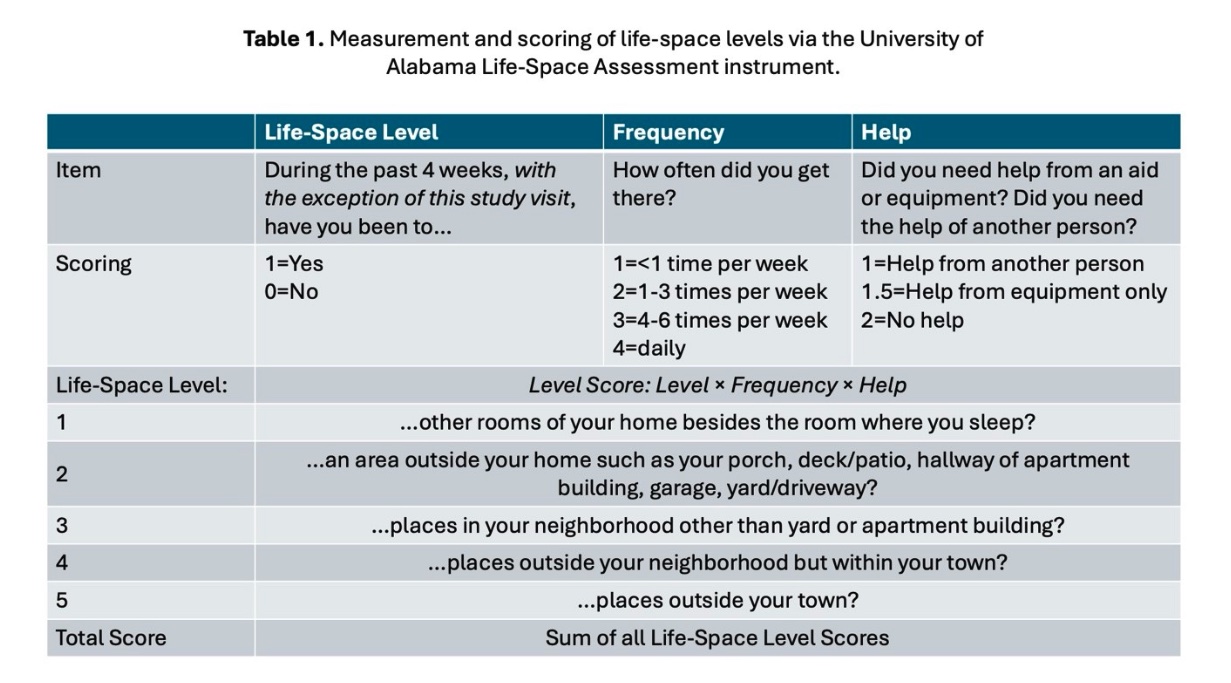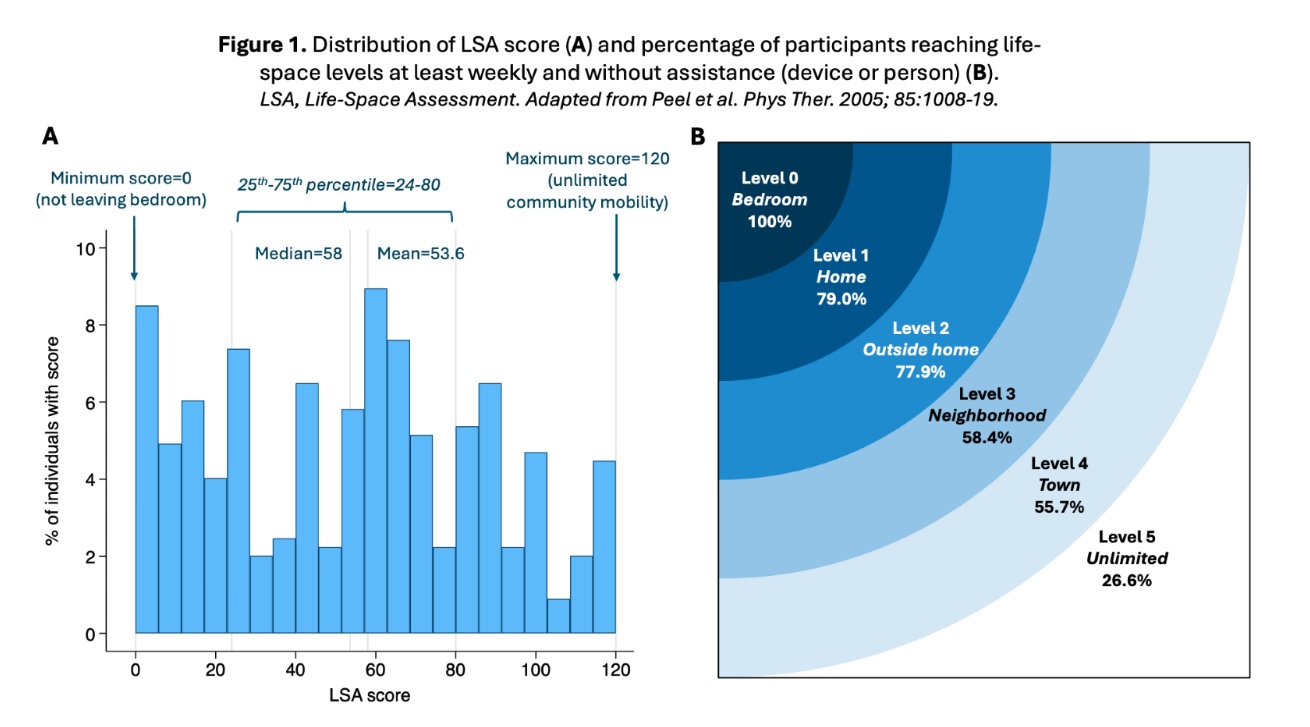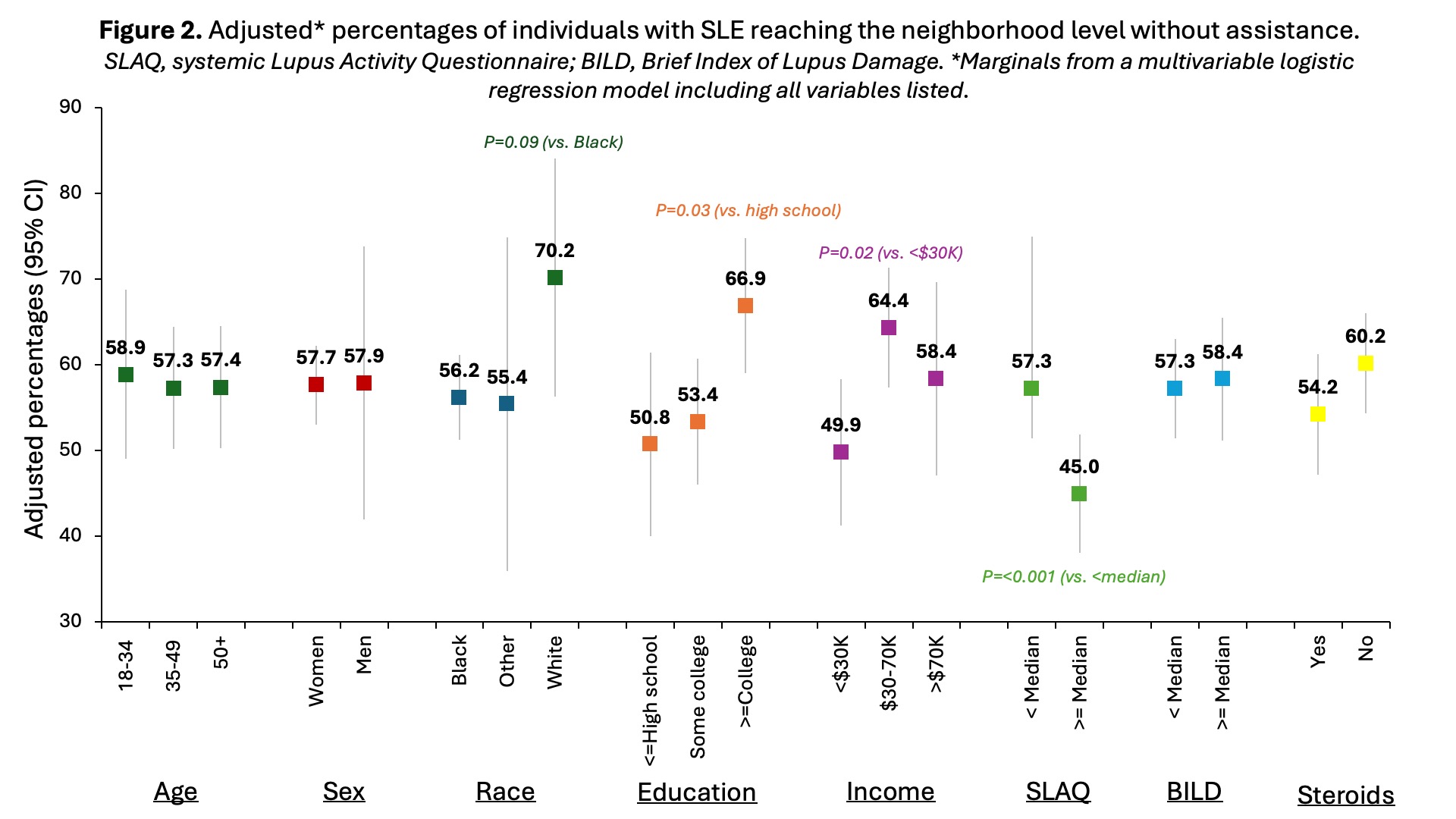Session Information
Session Type: Poster Session A
Session Time: 10:30AM-12:30PM
Background/Purpose: Measurement of the extent to which individuals move throughout their community and participate in social activities (“community mobility”) can provide a snapshot of how the effects of aging, disease, and other factors may restrict patients’ daily lives. Despite the clear relevance and benefits of community mobility, to our knowledge, it has never been measured in the setting of SLE. We used a novel measure, Life Space Assessment (LSA), to characterize and identify potential correlates of community mobility among a population-based, primarily Black U.S. cohort of individuals with SLE.
Methods: Participants meeting a validated definition of SLE were recruited for a one-time study visit (10/2019-5/2022) from the ongoing Georgians Organized Against Lupus (GOAL) cohort. Community mobility was measured via the University of Alabama at Birmingham LSA, which asks participants to report how far and how often they have traveled to life-space “levels” and how much help they needed to reach the levels (Table 1). The overall LSA score ranges from 0 to 120, with higher scores representing greater and more independent community mobility. We used descriptive statistics to report the LSA score distribution and assess the percentages of participants reaching each life-space level and multivariable logistic regression to assess the adjusted percentages reaching the neighborhood level without assistance by sociodemographic (age, sex, race, education, income) and clinical (self-reported disease activity, cumulative disease damage, and steroid use) factors, with adjustment for all other variables.
Results: Substantial restrictions in community mobility and, potentially, social participation were common in this SLE cohort, with nearly half of participants not traveling out of their neighborhood at least weekly without assistance. Further, the mean score in our cohort falls below the means reported in older adults and those with chronic obstructive pulmonary disease and chronic kidney disease. We found that better community mobility may be associated with higher socioeconomic indicators and lower SLE activity, but not with age or sex. Characterizing community mobility in individuals with SLE is a first step toward supporting evidence-based strategies for mitigating restrictions in life participation in this population.
Conclusion: Substantial restrictions in community mobility and social participation may be common in SLE, with nearly half of participants not traveling out of their neighborhood at least weekly without assistance. Further, the mean score in our cohort falls below means reported in older adults and those with chronic obstructive pulmonary disease and chronic kidney disease. We found that better community mobility and social participation may be associated with higher socioeconomic indicators and lower SLE activity, but not with age or sex. Characterizing community mobility in individuals with SLE is a first step toward supporting evidence-based strategies for mitigating restrictions in life participation among these patients.
To cite this abstract in AMA style:
Milanfar L, Yazdany J, Eudy A, Hoge C, Dunlop-Thomas C, Katz P, Plantinga L. Community Mobility in a Diverse Cohort of Individuals with Systemic Lupus Erythematosus [abstract]. Arthritis Rheumatol. 2024; 76 (suppl 9). https://acrabstracts.org/abstract/community-mobility-in-a-diverse-cohort-of-individuals-with-systemic-lupus-erythematosus/. Accessed .« Back to ACR Convergence 2024
ACR Meeting Abstracts - https://acrabstracts.org/abstract/community-mobility-in-a-diverse-cohort-of-individuals-with-systemic-lupus-erythematosus/



